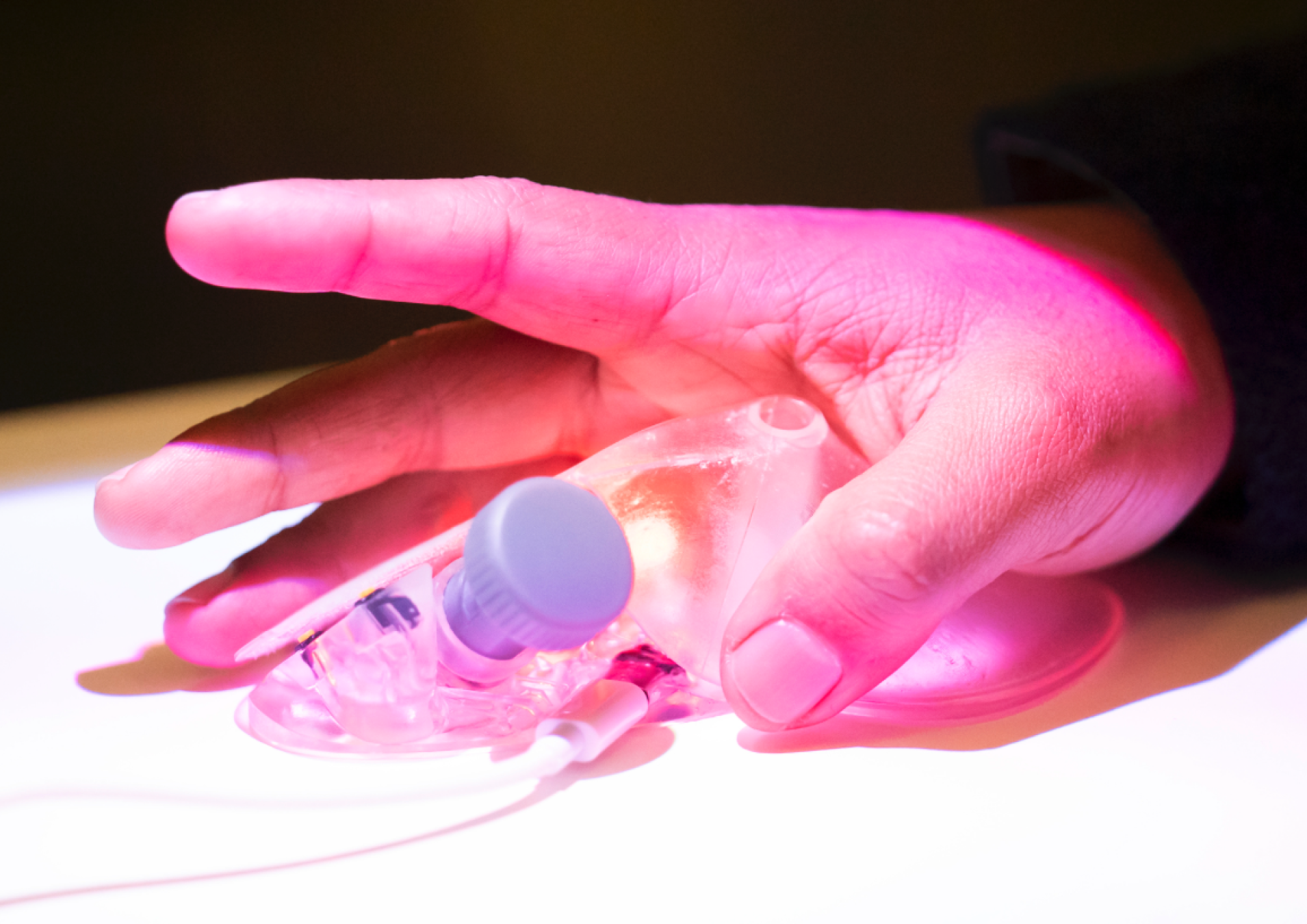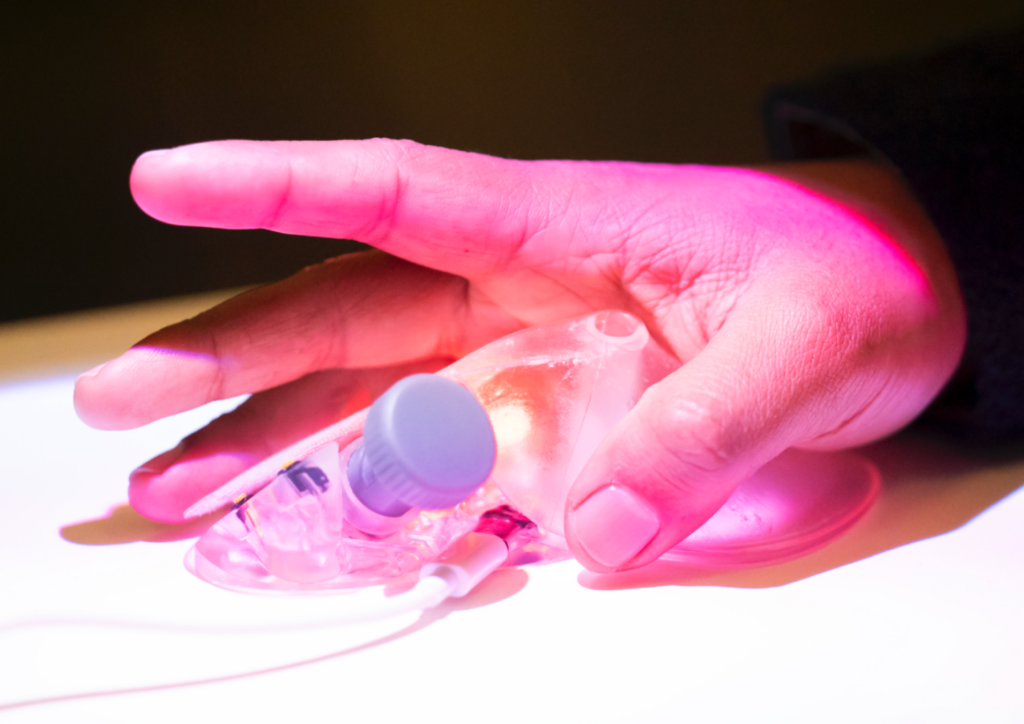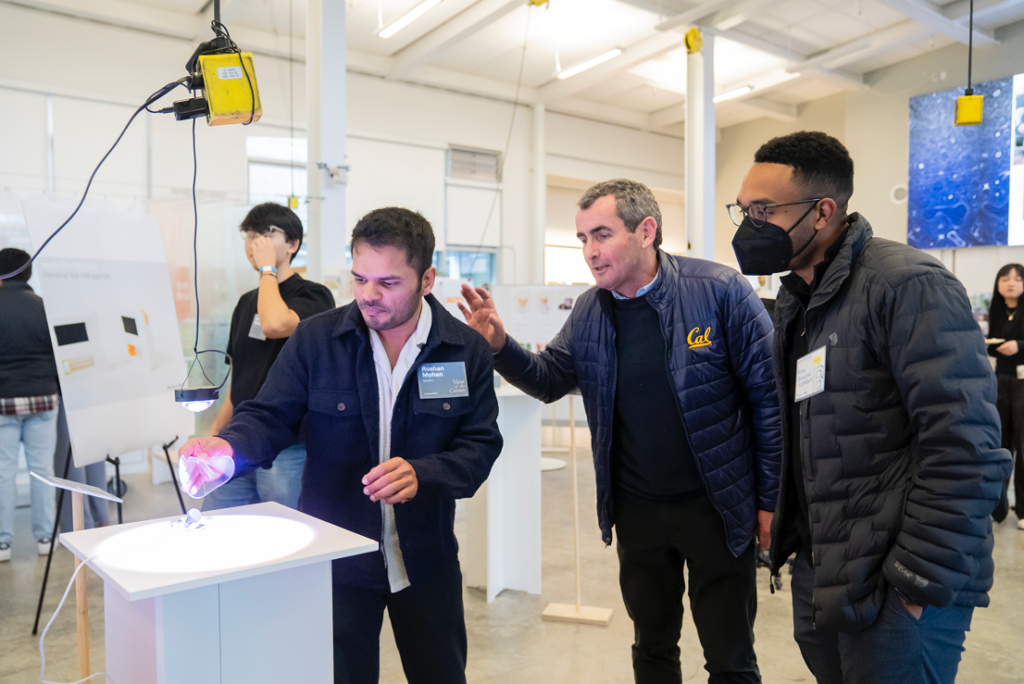Roshan Mohan
MDes 2024
A Vision for Producing Sustainable Hardware
Introduction
Traditionally, sustainability has been relegated to an afterthought in manufacturing. The consumer hardware industry has prioritized cost efficiency through global supply chains, contributing significantly to climate change projected to emit 852 million metric tons of CO₂ annually by 2030. However, this research leverages emerging technologies to fundamentally integrate sustainable practices into the core of design and production processes, using advanced materials and methods. “How We May Make” proposes a transformative approach to hardware production, envisioning a future where devices are made on-demand at local nano-factories, tailored to individual specifications using volumetric additive techniques.
How might we rethink the design and production of consumer hardware devices to ensure resilience in the face of climate change disruptions?
Manufacturing has traditionally focused on efficiently arranging atoms to create functional products, often treating sustainability as a secondary concern. However, rethinking the process from first principles rather than retrofitting sustainability opens new possibilities through additive manufacturing (AM). AM minimizes material waste and allows for complex, multimaterial fabrication in a single process, unlike conventional methods that generate significant waste. Despite its potential, slow production speeds have hindered AM’s widespread adoption. A breakthrough technology, volumetric additive manufacturing (VAM), particularly UC Berkeley’s Computed Axial Lithography (CAL), enables rapid, high-resolution 3D printing. In collaboration with the Nano Manufacturing Lab, this wor explored CAL’s application in printed electronics, successfully embedding LEDs and conductive materials into printed components and experimenting with hydrogel-based metal printing. These experiments demonstrate the feasibility of volumetrically printed electronics and highlight the potential for scalable, sustainable, and customized hardware fabrication.
Final Design

Model A is a fully 3D-printed computer mouse prototype that reimagines sustainable hardware design through additive manufacturing. Inspired by the first mass-produced electronic hearing aid, it was ergonomically tailored through hand-molded impressions and paper mockups, then translated into CAD and embedded with salvaged Logitech B100 components. The project explores how 3D space can transform circuit design, suggesting possibilities for generative design, multifunctional conductive pathways, and biodegradable materials. More than a functional object, Model A serves as a boundary object that is provoking dialogue among researchers, designers, and policymakers about integrating sustainability into the very foundation of hardware design and manufacturing.

This work calls for a radical transformation in the hardware industry to address not only the ethical imperative of climate change but also the economic and logistical fragility of global supply chains. It argues for a shift toward super-local, automated, and decentralized production to enhance resilience, reduce emissions, and respond to rising disruptions in global logistics. The work emphasizes designing hardware with recyclability in mind, advocating for closed-loop systems where materials can be recovered efficiently, potentially through innovations like bioreactor-based recycling. Acknowledging current limitations—such as reliance on silicon and the early stage of volumetric manufacturing—the thesis urges government support and global collaboration. Finally, it proposes speculative but plausible futures for sustainable hardware: customizable, on-demand devices, biodegradable materials, and generative design, all contributing to a more adaptable, eco-conscious, and user-centric production model.

Full listing


